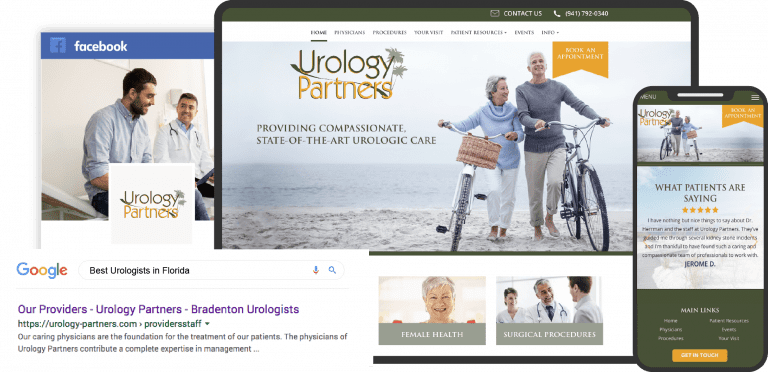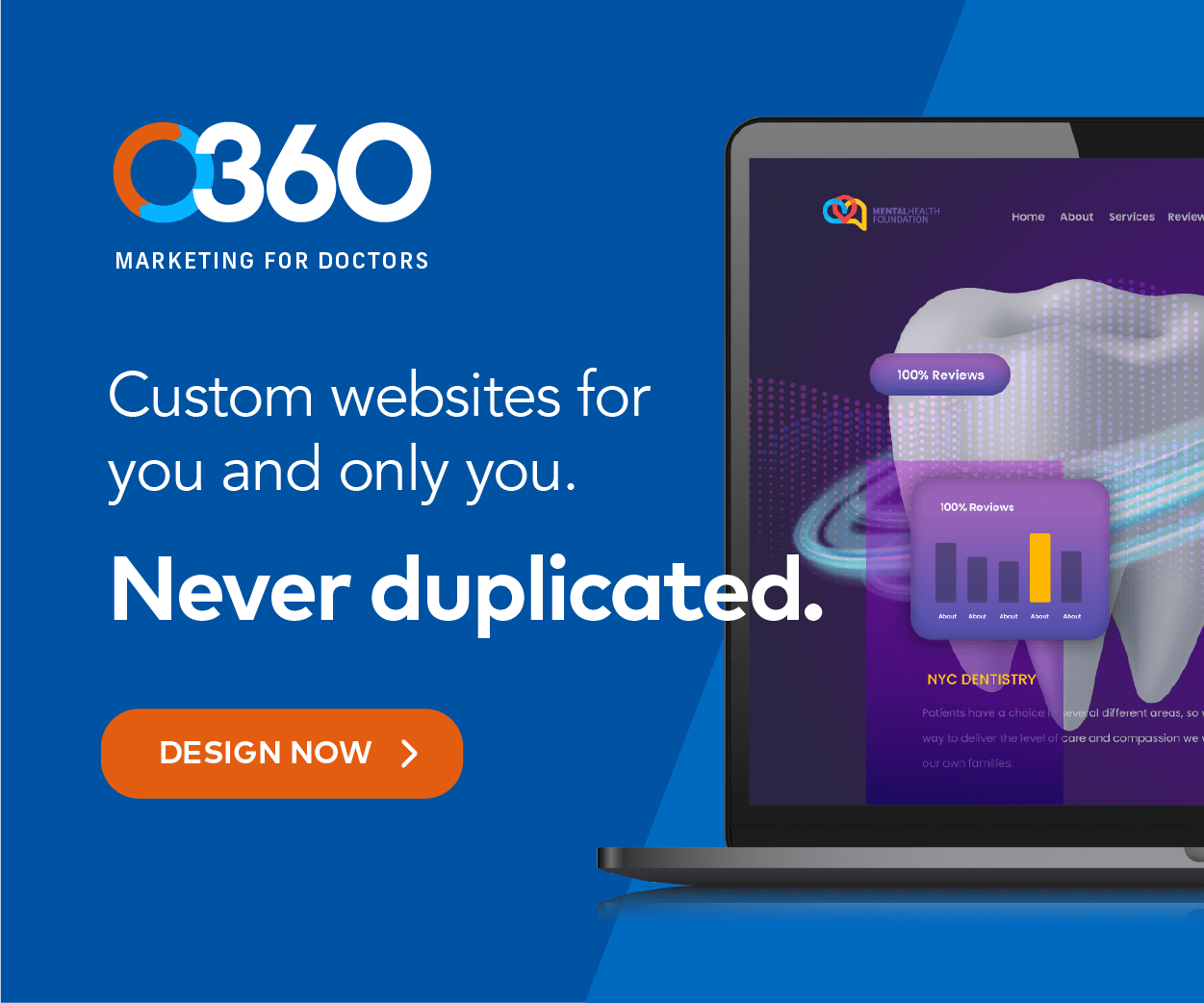
On the surface, content metrics in marketing is a key strategy for any growing business, but it’s also one of the biggest challenges to manage. For medical practices like yours, if you plan to push out a valuable content strategy, one of the biggest factors that needs to be considered is how well your strategy will perform. You can develop content, set clear goals, work within your budget, and even successfully launch it, but once your strategy is launched, it can take time and effort to sift through the data and figure out how well your strategy is performing.
It’s important to learn what content marketing metrics matter and how to track these metrics for the best possible success. Here, we’ll guide you on measuring them effectively and turning website visitors into new patients.
What Are Content Metrics?
Content marketing metrics are all about data points. These data points are used to evaluate how impactful and effective your content marketing strategy is and how successful your strategy is at achieving your goals. The metrics can be either numeric or descriptive, and different metrics convey different things.
Certain content metrics will have more value and impact on your strategy depending on the program you’re using to track data. The data gathered from these resources can be used to measure financial equations and interactions with content. While the data may seem like a collection of numbers and descriptors initially, it’s important to learn what metrics to pay attention to and analyze to make the most of your strategy.
What’s a Key Performance Indicator?

Key performance indicators are more specific than content metrics, which are purely data points that can convey information. Key performance indicators are indicators tied to specific goals and are used to measure the performance levels of your strategy against a specific objective. Here’s an example: the KPI set for a campaign can be to boost customer satisfaction with a product. To track the KPI, metrics such as a Net promoter score and customer satisfaction rate are tracked data points that will inform you about how well your goal is performing.
In these cases, content metrics will not direct the goals but track the KPI’s progress instead. KPIs can have multiple metrics tied to them and usually have an associated time frame. When measuring a KPI, not every metric will qualify, and only a certain selection of metrics will be relevant to your strategy, depending on your campaign’s goals. There is no one-size-fits-all answer to this issue, but on average, a successful content marketing strategy should have at least two to four KPIs for every business goal you have set for your practice.
Your Objectives and KPIs for Medical Marketing
KPIs are flexible objectives that can be chosen at any business level, whether you’re a small private practice or a multi-conglomerate company. However, choosing the right KPIs to track is just as important, especially if you lack patient growth, poor revenue growth, and other inefficiencies within your practice. If you’re looking to monitor and improve how your marketing strategies grow, then here are some KPIs to focus on:
Leads by Type
Leads by type refer to the methods by which your target audience has interacted with your brand. This includes contact us forms, content downloads, phone calls, visits to your website, email newsletter signups, and other ways of connecting with your practice. Depending on the data you find through this KPI, you can measure how those methods of interaction match up with your campaign through analytical services such as Google Analytics.
Conversion Rate of Website Visitors
This specific KPI refers to how much of your website traffic converts into leads or ways to contact your brand. The conversion rate for this KPI will inform you of how well your website is doing to motivate visitors to reach out to your practice and connect with your services.
Rate of New Patient Conversion
The new patient conversion rate refers to how many out of the total conversions lead to new patients. Initial interest in your brand from your visitors can falter if the new patient conversion rate lacks substance, so if you have a low patient conversion rate, it may mean issues with your practice’s interactions with potential new patients, such as missed phone calls or poor follow-up appointments.
Lead Conversion Rate by Source
The source of where your conversion rates are coming from also matters, so this KPI tracks what marketing channels are best as conversion rates for your business—understanding where your conversion rates are coming from means that you can direct your time and resources into that channel. For instance, if the conversion rate is arriving from Instagram rather than Facebook, you can decide to direct and focus your content marketing efforts towards that channel.
Cost Per New Patient
This KPI matters greatly, as it focuses on measuring the amount spent on digital marketing efforts and the revenue the average patient is bringing into your practice. This KPI can help you establish your ROI, determine how much growth you can expect from your campaign investment, and gain insights into where your content marketing strategy needs improvement.
Key Metrics for Measuring Medical Practice Growth
When it comes to content metrics for a medical practice, knowing which metrics to track can mean the difference between a campaign that runs and one that contributes meaningfully to growth. From the cost of acquiring new patients to understanding users’ behaviors on your website, these metrics provide a snapshot of how effectively your marketing efforts translate into real value for your practice. Here’s an in-depth look at these key content metrics and what it can tell you about your practice’s growth:
Patient Acquisition Cost
Patient acquisition cost measures the return on investment for your marketing efforts. Whether you’re tracking the costs of blog writing, social media posts, video marketing, or an interactive content plan, you can track it by measuring it against the value of your patients in whether they’re acquisitioned as new or returning patients. This metric helps you understand the efficiency and effectiveness of each marketing channel, whether it’s blog posts, social media, video marketing, or interactive content. By analyzing PAC, you can adjust your strategy to focus on the most cost-effective methods for attracting new patients and retaining existing ones.
Overall Website Traffic
Your practice website provides the main focus for your brand, so tracking visits to your website can provide meaningful insights into how well your campaign is performing. An increase in website traffic is often one of the first indicators of a successful marketing campaign. Tracking this content metric over time helps you gauge the effectiveness of specific content and campaigns and identifies trends in patient interest and engagement. Use tools like Google Analytics to track the quantity of traffic and quality, assessing metrics like source, page views, and user demographics.
Number of New Patients vs Returning Patients
This metric splits your patient base into two categories: those who are visiting your practice for the first time and those who are returning. Tracking the number of new versus returning patients helps assess your practice’s growth and loyalty. A healthy influx of new patients indicates effective patient acquisition strategies, while a strong base of returning patients suggests good patient retention and satisfaction.
Bounce Rate
The bounce rate measures the percent of visitors who leave your website after viewing a page. A high bounce rate might indicate your site’s content, navigation, or user experience not meeting visitors’ expectations. For a medical practice, an optimal website should engage users enough to explore further, such as viewing treatment options, reading informational content, or making an appointment.
Average Session Duration
Average session duration tracks the average time visitors spend on your website. This metric is closely tied to the quality of your content and your user’s experience. Longer session durations are typically a positive indicator of engaging, valuable content that resonates with potential patients.
Conversion Rate
Conversion rate is a useful metric for evaluating the effectiveness of your website and campaigns in prompting visitors to take a desired action. These actions could include booking an appointment, subscribing to a newsletter, or downloading a health guide. A higher conversion rate shows that your site is attracting the right visitors and compelling them to act, which is a direct contributor to practice growth.
Impressions and Reach
Impressions measure how often your content is displayed, regardless of whether it was clicked, while reach indicates the number of unique viewers. These metrics are particularly important for social media and digital advertising campaigns, providing insights into the effectiveness of your content in capturing attention.
Harness Your Content Marketing Strategy With Optimized360
Content marketing metrics can easily help you refine your approach, but learning how to utilize and act on the data given to you can be complicated to perform. Optimized360’s teams specialize in healthcare marketing and offer myriad ways to help you grow and expand your practice. If you want to refine your content marketing approach, contact Optimized360 to refine and improve your marketing strategy today.














